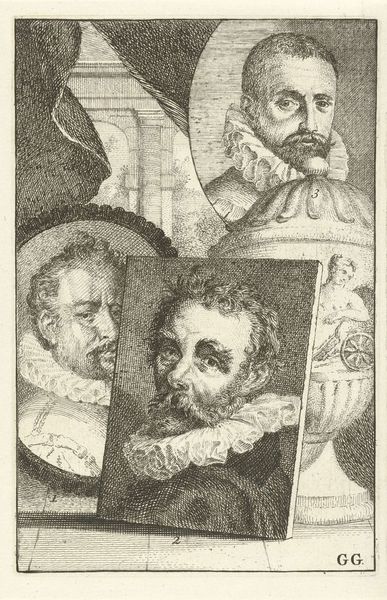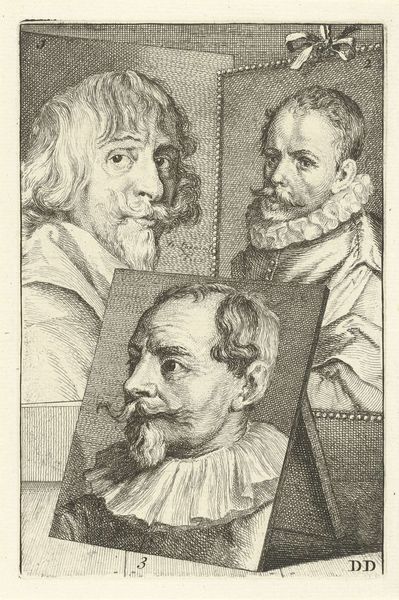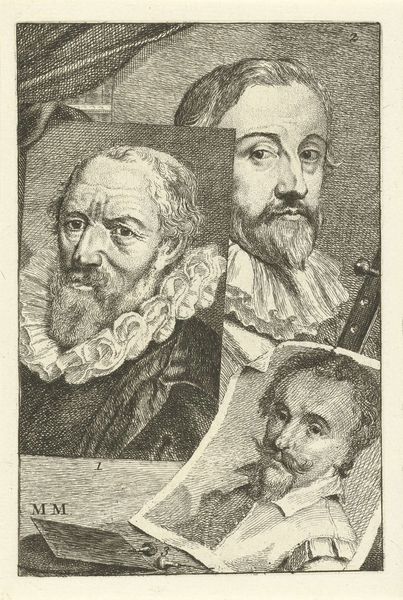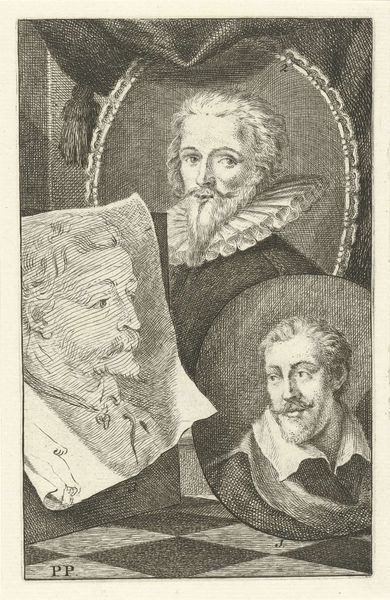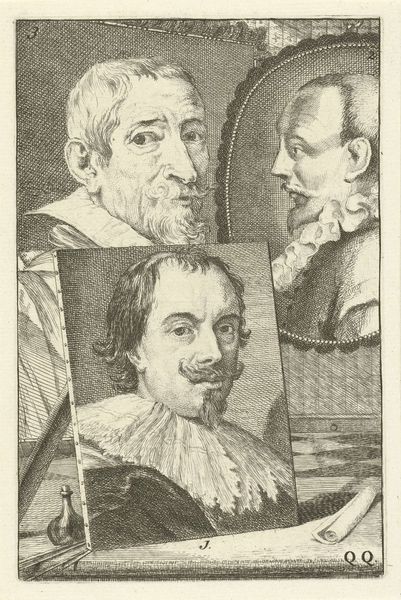
Dimensions: height 156 mm, width 103 mm
Copyright: Rijks Museum: Open Domain
Editor: This engraving, made in 1764 by Jan l' Admiral, presents portraits of Aart Jansz. Druyvestein, Roelant Savery, and Frans Hals. It has a rather intriguing layout; the three portraits are stacked almost like building blocks. What sort of stories can we read from it? Curator: Notice how each portrait is framed in a distinct way – an oval, a cropped circle, and a more naturalistic cut against the edge. It feels as though we’re meant to consider their roles separately but also as a collective memory, each playing a role in the cultural image of the Dutch Golden Age. Editor: That’s fascinating! The drapery in the background seems to visually connect to the ruffs, or lace collars, that each person wears, especially Roelant Savery. Can you tell me more about why the artist might connect the men to the textile background? Curator: The artist Jan l’ Admiral uses the common threads to create meaning. What do you think the texture in clothing communicates? The ruffs could symbolize the meticulous craftmanship and social status associated with the individuals they portray. And this style of formal portraiture reflects a particular moment in time, meant to evoke ideals and convey character traits, to influence memory. Editor: So, the drapery then mirrors not only the subjects' stature, but almost their time period itself? This makes me see that the work isn’t just a grouping, but an attempt at a holistic representation! Curator: Precisely. We have three masters represented; consider each for a moment as an important archetype. What emotions arise for you? Editor: Well, there is a feeling of grandness that resonates throughout the piece and time. This really captures an impressive history! Curator: Absolutely. Images shape how we understand our past, and this print shows how symbols and presentation create these cultural touchstones.
Comments
No comments
Be the first to comment and join the conversation on the ultimate creative platform.

